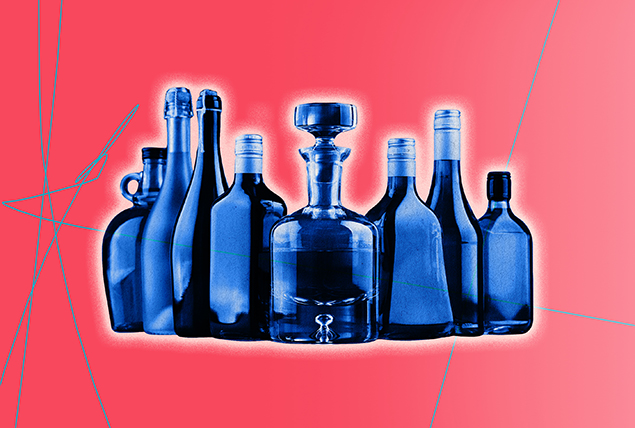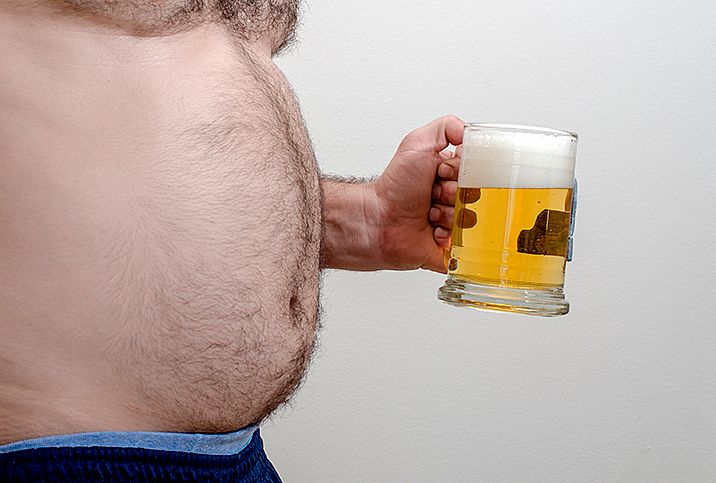Living With AUD Looks Different for Everybody

Alcohol use disorder (AUD) is a brain disease characterized by the inability to stop drinking despite its widespread negative impacts. The disorder influences multiple components of a person's life, including work, passions, love life, finances and sexual health. The physical and emotional dependence on alcohol can also affect partners, children, family and friends.
Research indicates that as consumption of alcohol increases, so does subjective sexual desire and the likelihood of risky sexual behavior. However, alcohol use has been shown to lower physiological arousal in women and cause some of the most common forms of sexual dysfunction, including an increase in genitourinary issues, dyspareunia (painful intercourse) and low vaginal lubrication.
The risk of long-term erectile dysfunction (ED) has been linked to heavy alcohol use in men. A study from 2007 indicated 72 percent of alcohol-dependent male subjects had one or more sexual dysfunctions, the most common of which were ED, premature ejaculation and low desire.
Heavy alcohol consumption can also reduce the production of testosterone.
Living with AUD
In 2019, 14.5 million people in America had an alcohol use disorder. Despite how common AUD is, less than 10 percent of individuals with AUD received any form of treatment.
Treatment can include therapy, 12-step programs, a medication that helps with cravings, and inpatient and outpatient rehabilitation programs. While recovery from AUD can take years, it is possible. Receiving short-term treatment does not mean someone is "cured" and their life can return to normal. Alcohol use disorder is characterized as a brain disorder, and changes to the brain caused by AUD can make individuals vulnerable to relapse. But various lifestyle recommendations exist to help support those in recovery.
The word "recovery" is sometimes conflated with abstinence, but can also include attempts to overcome addiction. Living with AUD looks different for everyone, depending on a variety of factors such as social support, treatment, coexisting mental illnesses and their disorder.
"In the first year of sobriety, accept all help that society has to offer you," said Bruce Bassi, M.D., an addiction psychiatrist and medical director of TelepsychHealth, based in Jacksonville, Florida.
Immersing themselves in a sober community can help people with AUD, Bassi explained.
"This will help you find success in non-drinking experiences and in other areas of your life," he added.
Social support is pivotal for recovery, and a supportive home environment can significantly impact someone's recovery success. Sober communities also encourage progress with alcohol abstinence.
"Vicarious learning through seeing others succeed also very much reinforces the importance of maintaining full sobriety," Bassi noted. "A sober community will also provide you with personal encouragement from counselors, friends, sponsors and other members of AA."
Alcoholics Anonymous (AA) is a nonprofessional, nondenominational, apolitical and unaffiliated fellowship of people with alcohol dependence that is dedicated to abstinence-based recovery from alcoholism.
Dating with AUD
Many treatment programs do not encourage dating early on in recovery so individuals can focus on their sobriety, avoid codependency and circumvent the potential for triggering or risky situations.
When people with alcohol use disorder are ready to date, sobriety can make dating stressful; it might be hard to find sober dates or recommend sober activities in response to the common default request for drinks as a first date. Dating while newly sober might feel awkward, especially if someone's dating history is enmeshed with former alcohol use.
Bassi recommended being honest about recovery in dating.
"I notice that the people who find the most success in dating are open about their sobriety early on in the relationship," Bassi said. "Being honest with oneself and others is a core component of recovery."
Being transparent about boundaries, such as needing a sober environment, can help.
The long-term effects of AUD
While recovery and alcohol abstinence aid wellness significantly, the physical effects from AUD can persist for years after someone stops drinking. AUD can also contribute to long-term adverse mental health effects such as depression. Physically, excessive alcohol use can lead to several chronic conditions.
There is new data that any consumption of this toxic substance is unhealthy for your body, Bassi explained
"In particular, neurons and cells in the heart and gastrointestinal tract are particularly vulnerable to the effects of alcohol," he said. "For this reason, alcohol has effects on memory, sleep, heart rhythms and gastrointestinal cancers, and effects such as cirrhosis of the liver."
Alcohol use disorder is one of the most common causes of chronic liver disease.
As the stages of alcohol use disorder progress, the vulnerability to health conditions does, too. Cancer, a weakened immune system, high blood pressure, heart disease and mental illnesses are long-term risks of AUD. The effects on the brain can make people with the disorder prone to memory loss and dementia.
AUD also affects fertility for both men and women. For women, alcohol use may decrease ovarian reserve or the ability of the ovaries to release eggs capable of fertilization. For men, AUD can lead to testicular atrophy and reduced sperm production.
Myths and misconceptions
While alcohol use disorder is chronic, it's still treatable. A misconception about AUD is that treatment does not work because relapse rates are high. Various factors, including social support and receiving the proper treatment, can impact how effectively treatment works.
Success is also not always black and white.
"One myth is that a single drink completely ruins your sobriety," Bassi said. "Yes, your sober days reset back to zero, but all that sober time still counts. One day of drinking over the past year is still a major win. Don't let a single relapse get you down."
People with AUD can learn from a relapse.
"Be honest and open with your sponsor about what happened, and use every relapse as a learning opportunity by zooming in and investigating what happened beforehand that led up to it," Bassi said. "Most of the time, it is not as sudden as you think, and there were high-risk behaviors and people, places or things that triggered you."
Another myth is that alcohol use disorder has to look a certain way—or be bad enough—to be cause for concern. While AUD is often depicted in media as a clearly identifiable illness, this is not always the case. Certain factors, such as life success, do not indicate the absence of the disorder. Even if someone can hold a job or meet additional markers of success, this does not mean they do not have the disease and could not benefit from treatment.
Another myth is that AUD creates isolation. While sobriety may feel isolating, especially initially in recovery, many people experience alcohol use disorder. A community of people who are working on their sobriety can be helpful.
Finally, there's the misconception that if someone has AUD, it's their fault. In fact, alcohol use disorder is a brain disorder where noticeable shifts occur across multiple brain regions. Several risk factors, such as genetics, mental illness and early-life trauma, can make an individual vulnerable to AUD.


















